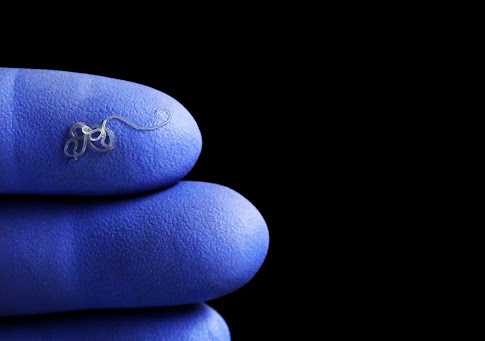January 3, 2025 - Researchers and technology companies are working together to remove nematodes - also known as fish worms - from white fish.
"This challenging project to automate nematode removal, called Nematode-Trim, aims to make the fishing industry more efficient and profitable," says senior scientist Karsten Heia at Nofima. He leads the Nematode-Trim project, which is funded by FHF - the Norwegian Seafood Research Fund. "In this project we run a feasibility study to evaluate different relevant technologies for nematode removal", says Heia.
The current method is time-consuming and inefficient
This project began when the white fish industry looked for novel technology to automate nematode removal. NMBU, Maritech, Marel and Lerøy Norway SeaFoods are working with Nofima to find solutions.
The current manual method for removing nematodes in fish fillets is both time-consuming and inefficient. Usually, each fillet is placed on a light table where trimmers manually remove the parasites with a knife.
"This manual method often wastes perfectly good fish meat," the Nofima scientist states.
Two innovative solutions
Nofima, together with Maritech, has already developed a method for detecting nematodes in fish fillets using Maritech Eye. Maritech Eye is a new technology that makes it possible to evaluate fish quality by scanning it using visible and infrared light. Now this technology will be combined with yet another innovation to remove the nematodes in the same operation as they are detected.
"The Nematode-Trim project explores two innovative solutions for automating nematode removal: a water cutter from Marel and a robotic solution being developed by NMBU. These technologies are now being tested to see how effective they are, how much fish meat is saved and whether they can be integrated into existing production lines," explains Karsten Heia.
Marel's FleXicut is already used to remove bones in white fish and cut cod fillets into different portions. Now it may be adapted to also remove nematodes. The system uses water jets to cut through the fish fillet and divide it into different parts and sizes.
"The parts of the fillet containing nematodes will be sorted into a separate product flow for further processing, such as manual trimming or freezing. This ensures that only clean fillet parts continue in the production line. This leads to increased efficiency and reduces waste," says Heia.
NMBU is in the process of developing a solution based on robotic arms equipped with specialised tools to remove the parasites.
"These robots will use data from Maritech Eye to locate and remove parasites with high precision. The system will be tested to ensure it can operate effectively on a moving conveyor belt," says Heia.
Important step towards a more efficient and profitable fish industry
According to the researcher, costs can be reduced and product yield increased by automating nematode removal. He believes this will provide economic benefits for both technology developers and fish producers. In the long term, the technology can also be adapted for other fish species, which further increases its value.
"The Nematode-Trim project represents an important step towards a more efficient and profitable fish industry. By combining advanced imaging technology with innovative automation solutions, the project hopes to set a new standard for quality and efficiency in fish production," says Karsten Heia.
For more information, visit HERE.
The Aquaculturists

No comments:
Post a Comment